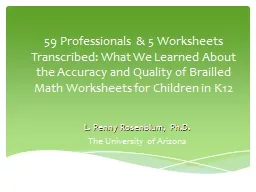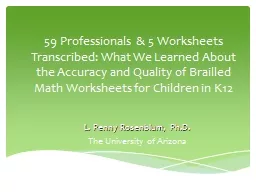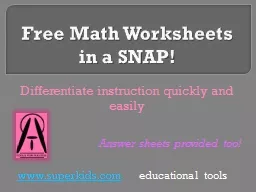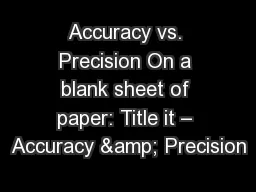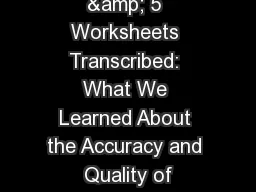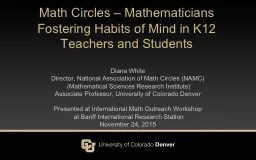PPT-59 Professionals & 5 Worksheets Transcribed: What We Learned About the Accuracy and
Author : ellena-manuel | Published Date : 2019-11-05
59 Professionals amp 5 Worksheets Transcribed What We Learned About the Accuracy and Quality of Brailled Math Worksheets for Children in K12 L Penny Rosenblum PhD
Presentation Embed Code
Download Presentation
Download Presentation The PPT/PDF document "59 Professionals & 5 Worksheets Tran..." is the property of its rightful owner. Permission is granted to download and print the materials on this website for personal, non-commercial use only, and to display it on your personal computer provided you do not modify the materials and that you retain all copyright notices contained in the materials. By downloading content from our website, you accept the terms of this agreement.
59 Professionals & 5 Worksheets Transcribed: What We Learned About the Accuracy and: Transcript
Download Rules Of Document
"59 Professionals & 5 Worksheets Transcribed: What We Learned About the Accuracy and"The content belongs to its owner. You may download and print it for personal use, without modification, and keep all copyright notices. By downloading, you agree to these terms.
Related Documents

